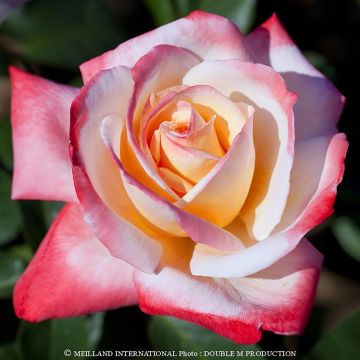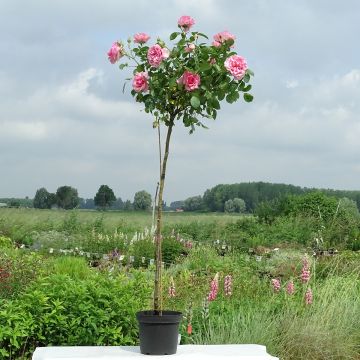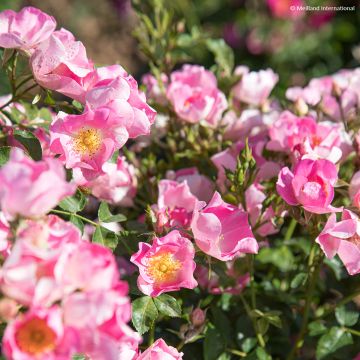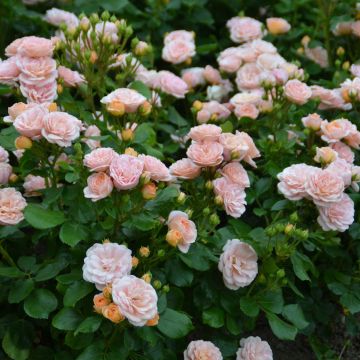

Rosa Princess of Monaco - Hybrid Tea Rose
Rosa Princess of Monaco - Hybrid Tea Rose
Rosa Princesse de Monaco® Meimagarmic
This item cannot be shipped to the selected country
Delivery charge from €5.90
Delivery charge from €5.90
Delivery charge from €5.90
More information
Schedule delivery date,
and select date in basket
This plant carries a 24 months recovery warranty
More information
We guarantee the quality of our plants for a full growing cycle, and will replace at our expense any plant that fails to recover under normal climatic and planting conditions.
From €5.90 for pickup delivery and €6.90 for home delivery
Express home delivery from €8.90.
From €5.90 for pickup delivery and €6.90 for home delivery
Express home delivery from €8.90.
From €5.90 for pickup delivery and €6.90 for home delivery
Express home delivery from €8.90.

Does this plant fit my garden?
Set up your Plantfit profile →
Description
The Princesse de Monaco® 'Meimagarmic' rose is an emblematic variety dedicated to Princess Grace of Monaco. Created by the breeder Meilland in 1982, this bush rose pays tribute to the grace and beauty of the former actress turned princess. It is appreciated for its large, elegant, bicoloured flowers, in a creamy white enhanced with carmine pink edges, which look wonderful in bouquets. Its abundant and perpetual flowering begins in late spring and continues until the first frosts.
The Princesse de Monaco® variety, belonging to the group of large-flowered bush roses or modern hybrid teas, is a compact bush with a balanced and dense habit. It reaches a mature height of 70 to 80 cm with a width of 50-55 cm, making it an excellent choice for small gardens or flower borders. The dark green shiny foliage is semi-evergreen and disease-resistant; it maintains a healthy appearance throughout the season. The 13-14 cm diameter flowers, composed of around 30 petals, have an almost perfect shape. Although their scent is very subtle, they are particularly appreciated for their elegant appearance and excellent vase life.
The Princesse de Monaco® rose bush lends itself to various uses in the garden. Whether planted alone or in bed, in groups of 3 to 5, it stands out with its spectacular large flowers. Its colour palette blends easily with other roses, especially varieties in pink, white, purple, or bluish hues. For a successful combination, it can be accompanied by perennials such as Salvia nemorosa 'Caradonna', phlox paniculata 'Tiara', Delphinium Pacific Giant 'Cameliard', or even Geranium 'Patricia'. These plants will enhance the beauty of the rose's flowers.
Report an error about the product description
Plant habit
Flowering
Foliage
Botanical data
Rosa
Princesse de Monaco® Meimagarmic
Rosaceae
Cultivar or hybrid
Other Large-flower tea Roses
Planting and care
Plant your Princess of Monaco rose bush in a sunny or lightly shaded location. Modern roses are tolerant, but do not like excess limestone. They will adapt to any garden as long as the soil is well worked, not too heavy, and rich enough. To plant your rose bush, work the soil well by crumbling it and adding fertiliser, such as dried blood or dehydrated horn, at the bottom of the planting hole. Water generously after planting to eliminate air pockets. Water regularly for a few weeks to facilitate rooting.
Pruning modern perpetual roses is essential for flowering. It is done in three steps:
1. Maintenance pruning: regularly shorten the flowering branches throughout the season. To promote the reblooming of perpetual roses, remove faded flowers along with their stem, leaving 2 or 3 leaves.
2. Autumn pruning: light pruning that anticipates the real spring pruning.
It is not recommended in cold regions as it may weaken the bush.
3. Spring pruning: in February-March, when the buds have grown into shoots 2 to 3 cm long: prune the young strong branches to one-quarter of their length.
Pruning always aims to clear the heart of the bush and remove dead wood, diseased branches, and weak shoots. Keep the most vigorous ones, generally 3 to 6 well-positioned branches to maintain a beautiful habit. Always prune at an angle ½ cm or 1 cm above an outward facing bud.
Roses are often stained or unsightly at the end of summer, but this does not affect their development. These stains are not harmful to the rose bush, it is a natural phenomenon.
Planting period
Intended location
Care
This item has not been reviewed yet - be the first to leave a review about it.
Roses by producer
Haven't found what you were looking for?
Hardiness is the lowest winter temperature a plant can endure without suffering serious damage or even dying. However, hardiness is affected by location (a sheltered area, such as a patio), protection (winter cover) and soil type (hardiness is improved by well-drained soil).

Photo Sharing Terms & Conditions
In order to encourage gardeners to interact and share their experiences, Promesse de fleurs offers various media enabling content to be uploaded onto its Site - in particular via the ‘Photo sharing’ module.
The User agrees to refrain from:
- Posting any content that is illegal, prejudicial, insulting, racist, inciteful to hatred, revisionist, contrary to public decency, that infringes on privacy or on the privacy rights of third parties, in particular the publicity rights of persons and goods, intellectual property rights, or the right to privacy.
- Submitting content on behalf of a third party;
- Impersonate the identity of a third party and/or publish any personal information about a third party;
In general, the User undertakes to refrain from any unethical behaviour.
All Content (in particular text, comments, files, images, photos, videos, creative works, etc.), which may be subject to property or intellectual property rights, image or other private rights, shall remain the property of the User, subject to the limited rights granted by the terms of the licence granted by Promesse de fleurs as stated below. Users are at liberty to publish or not to publish such Content on the Site, notably via the ‘Photo Sharing’ facility, and accept that this Content shall be made public and freely accessible, notably on the Internet.
Users further acknowledge, undertake to have ,and guarantee that they hold all necessary rights and permissions to publish such material on the Site, in particular with regard to the legislation in force pertaining to any privacy, property, intellectual property, image, or contractual rights, or rights of any other nature. By publishing such Content on the Site, Users acknowledge accepting full liability as publishers of the Content within the meaning of the law, and grant Promesse de fleurs, free of charge, an inclusive, worldwide licence for the said Content for the entire duration of its publication, including all reproduction, representation, up/downloading, displaying, performing, transmission, and storage rights.
Users also grant permission for their name to be linked to the Content and accept that this link may not always be made available.
By engaging in posting material, Users consent to their Content becoming automatically accessible on the Internet, in particular on other sites and/or blogs and/or web pages of the Promesse de fleurs site, including in particular social pages and the Promesse de fleurs catalogue.
Users may secure the removal of entrusted content free of charge by issuing a simple request via our contact form.
The flowering period indicated on our website applies to countries and regions located in USDA zone 8 (France, the United Kingdom, Ireland, the Netherlands, etc.)
It will vary according to where you live:
- In zones 9 to 10 (Italy, Spain, Greece, etc.), flowering will occur about 2 to 4 weeks earlier.
- In zones 6 to 7 (Germany, Poland, Slovenia, and lower mountainous regions), flowering will be delayed by 2 to 3 weeks.
- In zone 5 (Central Europe, Scandinavia), blooming will be delayed by 3 to 5 weeks.
In temperate climates, pruning of spring-flowering shrubs (forsythia, spireas, etc.) should be done just after flowering.
Pruning of summer-flowering shrubs (Indian Lilac, Perovskia, etc.) can be done in winter or spring.
In cold regions as well as with frost-sensitive plants, avoid pruning too early when severe frosts may still occur.
The planting period indicated on our website applies to countries and regions located in USDA zone 8 (France, United Kingdom, Ireland, Netherlands).
It will vary according to where you live:
- In Mediterranean zones (Marseille, Madrid, Milan, etc.), autumn and winter are the best planting periods.
- In continental zones (Strasbourg, Munich, Vienna, etc.), delay planting by 2 to 3 weeks in spring and bring it forward by 2 to 4 weeks in autumn.
- In mountainous regions (the Alps, Pyrenees, Carpathians, etc.), it is best to plant in late spring (May-June) or late summer (August-September).
The harvesting period indicated on our website applies to countries and regions in USDA zone 8 (France, England, Ireland, the Netherlands).
In colder areas (Scandinavia, Poland, Austria...) fruit and vegetable harvests are likely to be delayed by 3-4 weeks.
In warmer areas (Italy, Spain, Greece, etc.), harvesting will probably take place earlier, depending on weather conditions.
The sowing periods indicated on our website apply to countries and regions within USDA Zone 8 (France, UK, Ireland, Netherlands).
In colder areas (Scandinavia, Poland, Austria...), delay any outdoor sowing by 3-4 weeks, or sow under glass.
In warmer climes (Italy, Spain, Greece, etc.), bring outdoor sowing forward by a few weeks.




















































